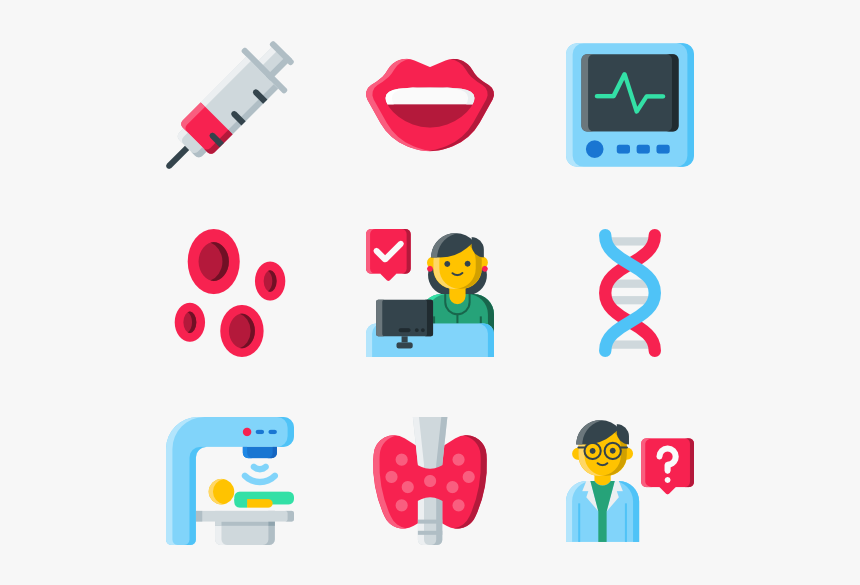Navigating Career Transitions: Achieving Work-Life Harmony
Embarking on a career transition represents a pivotal juncture, demanding a harmonious blend of professional aspirations and personal well-being. This intricate process necessitates substantial resource allocation, adaptability, and a well-defined strategy to maintain equilibrium. This article elucidates fifteen evidence-based strategies for achieving work-life harmony during this transformative phase, drawing upon established frameworks in time management, stress mitigation, and self-care. Key concepts such as work-life integration (the synergistic alignment of professional and personal life), boundary management (the strategic demarcation between work and personal spheres), and self-leadership (proactive influence on oneself toward goals), provide the theoretical foundation for our exploration.
Strategic Foresight: Laying the Groundwork for Harmony
Prior to initiating a career transition, a comprehensive strategic plan is indispensable. This involves articulating SMART (Specific, Measurable, Achievable, Relevant, Time-bound) goals, establishing clear milestones, and developing a realistic timeline. Drawing upon the principles of strategic management, this proactive approach mitigates potential stressors and facilitates effective time management. The application of the Pareto Principle (80/20 rule) enables efficient task allocation, concentrating efforts on high-impact activities to optimize energy expenditure and reduce feelings of overwhelm.
Boundary Management: Protecting Personal Sanctity
Establishing and upholding distinct boundaries between professional and personal spheres is fundamental to well-being. This includes designating a dedicated workspace, adhering to consistent work hours, and employing communication tools strategically to manage professional interactions. In alignment with role theory, individuals occupy multiple roles (e.g., employee, parent, partner), and effective boundary management prevents role conflict and role overload. By judiciously managing these boundaries, individuals can curtail role spillover and alleviate work-related stress, thereby enhancing their overall quality of life.
Technology Orchestration: Amplifying Efficiency and Connectivity
Strategic deployment of technology can substantially augment efficiency and streamline workflows. Productivity suites, digital calendar systems, and project management platforms facilitate organization and optimize time allocation. Collaboration technologies, such as cloud-based project management software and video conferencing platforms, foster seamless communication and diminish the reliance on time-consuming in-person engagements. This approach resonates with the principles of business process reengineering, emphasizing the optimization of workflows through technology. Efficient technology integration allows for augmented personal time and diminished stress, thereby promoting superior work-life harmony.
Prioritizing Somatic Well-being: Cultivating Resilience
Consistent physical activity is integral to both physical and mental health. Integrating exercise into the daily regimen – through mindful movement such as yoga, brisk ambulatory activity, or participation in team sports – counteracts stress and elevates energy levels. This aligns with the tenets of the biopsychosocial model of health, underscoring the interconnectedness of biological, psychological, and social factors in overall well-being. Consistent physical exercise augments emotional regulation and fosters refined coping mechanisms, essential during periods of transition.
Mindfulness Cultivation: Nurturing Mental Fortitude
Career transitions frequently elicit substantial stress responses. Mindfulness practices, such as meditative techniques and diaphragmatic breathing exercises, assist in stress management and promote cognitive clarity. This aligns with the principles of Acceptance and Commitment Therapy (ACT), which emphasizes acceptance of difficult thoughts and feelings, and commitment to values-based action. By cultivating mindfulness, individuals enhance their capacity to navigate challenges, fostering resilience and adaptive problem-solving proficiencies.
Strategic Respite: Optimizing Performance and Preventing Depletion
Scheduled respites are vital for sustaining productivity and averting burnout. Strategic breaks – incorporating brief periods of relaxation and rejuvenation throughout the workday – enhance focus, improve cognitive function, and mitigate mental fatigue. This principle aligns with the concepts of Ultradian Rhythms, acknowledging the body's natural cycles of energy and rest. By actively scheduling breaks, individuals can sustain optimal performance and prevent the depletion of mental and physical resources.
Continuous Augmentation: Investing in Future Trajectory
Career transitions present avenues for upskilling and professional enrichment. Investing time in continuous learning – through online curricula, workshops, and professional networking forums – not only enhances career prospects but also cultivates a sense of purpose and accomplishment. This resonates with the principles of andragogy, which emphasizes adult learning principles such as self-direction and relevance. Continuous learning mitigates feelings of stagnation and promotes adaptability in a dynamic professional milieu.
Building a Robust Support Ecosystem: Leveraging Social Capital
A resilient support network is crucial for navigating the complexities of career transitions. Cultivating relationships with family members, friends, mentors, and professional organizations provides emotional sustenance, guidance, and diverse perspectives. This leverages the concept of social capital theory, emphasizing the importance of social connections and networks in achieving personal and professional goals. Sharing experiences and seeking support from others alleviates feelings of isolation and enhances resilience.
Prioritizing Sleep Architecture: Fueling Optimal Functionality
Adequate sleep is foundational for both physical and cognitive well-being. Establishing a consistent sleep schedule and cultivating a relaxing bedtime routine are crucial for maintaining optimal energy levels and mental acuity. This approach is grounded in the principles of sleep hygiene, emphasizing the importance of creating an environment conducive to restful sleep. Sufficient sleep significantly enhances decision-making, problem-solving, and overall capacity for managing demanding transitions.
Managing Expectations: Embracing a Growth Paradigm
Maintaining realistic expectations is essential throughout the transition journey. Acknowledging the potential for setbacks and celebrating incremental milestones fosters a growth mindset – a belief in continuous development and learning. This approach aligns with the principles of self-efficacy theory, emphasizing the importance of believing in one's ability to succeed. A growth mindset empowers individuals to approach challenges with resilience and perseverance.
Aligning Actions with Values: Prioritizing Intrinsic Motivators
Clearly delineating personal values and aligning actions accordingly is crucial for sustaining a sense of purpose and fulfillment. This involves prioritizing tasks and activities that resonate with core values, ensuring decisions support both personal and professional aspirations. This resonates with the principles of values-based leadership, emphasizing the importance of aligning actions with deeply held beliefs. Prioritizing values minimizes feelings of disillusionment and fosters a sense of purpose throughout the transition.
Open Communication: Cultivating Transparency and Synergy
Effective communication is vital for managing expectations and cultivating supportive relationships. Transparently communicating needs and limitations with employers, colleagues, and loved ones fosters understanding and facilitates collaboration. This aligns with the principles of interpersonal communication theory, which emphasizes the importance of clear and empathetic communication. Open communication mitigates misunderstandings, reduces stress, and cultivates a supportive environment conducive to success.
Nurturing Interpersonal Relationships: Strengthening Social Bonds
Sustaining strong relationships with family and friends provides emotional resilience and fortifies coping mechanisms. Allocating quality time with loved ones enhances well-being and mitigates feelings of isolation. This aligns with the attachment theory, which underscores the importance of close relationships in providing security and support. Nurturing relationships provides a vital source of strength and encouragement during challenging transitions.
Mitigating Overcommitment: Safeguarding Resources and Averting Depletion
Overcommitment can precipitate burnout and impede the transition trajectory. It is imperative to be cognizant of personal capacity and to learn to decline commitments when necessary. This aligns with the concept of self-compassion, prioritizing personal well-being to avert the depletion of resources. Prioritizing tasks and managing workload effectively minimizes feelings of overwhelm and promotes sustainability throughout the transition.
Iterative Evaluation and Adaptation: A Dynamic Trajectory
Routinely assessing work-life integration and implementing necessary adaptations is essential. Life circumstances and priorities are fluid; continuous evaluation ensures strategies remain aligned with evolving needs. This iterative approach aligns with the principles of continuous improvement, emphasizing the importance of ongoing evaluation and refinement. Regular self-assessment facilitates course correction and ensures sustainable work-life harmony throughout the transition journey.
Conclusion and Recommendations
Successfully navigating work-life harmony during a career transition requires a holistic and adaptive approach. By integrating proactive planning, effective boundary management, and deliberate self-care practices, individuals can achieve a synergistic balance between professional ambitions and personal well-being. This journey demands self-awareness, effective communication, and the cultivation of robust support networks. The outcome transcends the mere completion of a career transition, fostering a sustainable lifestyle characterized by resilience, fulfillment, and enduring well-being. General conclusions suggest that a proactive, value-driven, and adaptable approach is paramount for success. Recommendations include prioritizing self-awareness, cultivating strong communication skills, and continuously evaluating and adjusting strategies based on individual needs and circumstances. The impacts of successful work-life integration include reduced stress, improved mental and physical health, enhanced productivity, and greater overall life satisfaction. Applicability extends to individuals across various industries and career stages. Further research should explore the long-term effects of specific work-life integration strategies on career satisfaction and overall well-being, as well as the role of organizational support in promoting employee work-life harmony. Additionally, longitudinal studies could examine the evolving nature of work-life integration strategies throughout different phases of a career transition.
Reader Pool: In what ways can organizations proactively foster a culture that supports employees undergoing career transitions in achieving optimal work-life integration, and what metrics could be used to evaluate the effectiveness of such initiatives?




No comments yet. Be the first to share your thoughts!